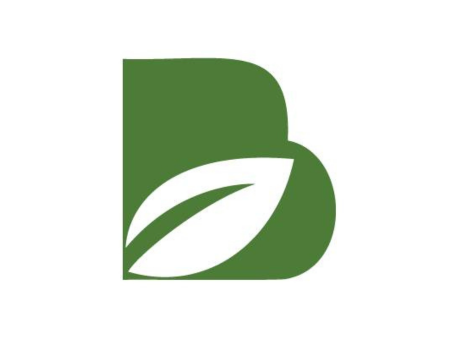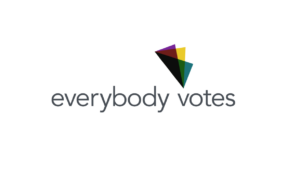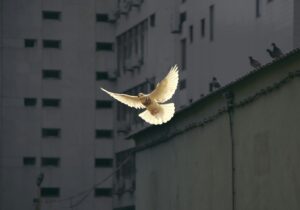Belterra partners with small and medium-sized farmers to transform degraded land into productive forests, which once established will produce food for decades.
Thais Kasecker of Belterra spoke with Ambika Samarthya-Howard on June 6, 2025. Click here to read the full conversation with insights highlighted.
Ambika Samarthya-Howard: Can you introduce yourself and tell me a little bit about Belterra?
Thais Kasecker: I’m Thais Kasecker, Program Director of Belterra Agraflorestas. We are two institutions with different approaches. We are Belterra, the company, and also Belterra, the institute. The company has a specific model and, of course, needs profit to stand as a business model. I’m part of the Belterra Institute. We work as a philanthropy, and we mainly address vulnerable people, whom we call Quilombolas. We are also planning to work with Indigenous people, but we still don’t have any type of approach for them in our portfolio right now. We are trying to close a new project with an Indigenous group.
We have a project with Avina and Conexsus, which is on Marajó Island, in the mouth of the Amazon River. It’s the Marajó Resiliente Project, which is funded by GCF [Green Climate Fund]. We are responsible for implementing agroforestry with Quilombolas and traditional people from the Amazon. We have a goal of reaching 800 hectares of agroforest to directly benefit around 800 families.
Ambika Samarthya-Howard: In the Marajó Resiliente Project, what is your role as an institute in relation to Avina and Conexsus?
Thais Kasecker: The project was developed with three components. The first component is to implement resilient agroforestry systems, which we, as an institute, are responsible for doing. We go to the fields, and we meet all the potential beneficiaries. We selected and trained 30 people to serve as technical assistance on the ground. We call them multipliers, the disseminators.
The second one is about implementing climate governance, so it’s all related to advisors and public policies. That’s led by a Brazilian institute, IEB [Instituto Brasileiro de Educação]. They are mainly responsible for governance, meeting the mayors, trying to organize climate planning for the municipalities, and making connections with the National Adaptation Strategy.
The third one is led by Conexsus and related to new business for the communities and creating access to markets and access to credit.
Ambika Samarthya-Howard: Belterra trains people to work on the ground?
Thais Kasecker: Yes, we trained them from November 2024 to January 2025. We built a program with them for capacity building to develop this role. They were trained on climate change, territorial development, and techniques on planting seeds, building a nursery, managing the agroforestry systems, offering technical assistance, and understanding the role of technical assistance on the field. In the community, 50% of the people are women, and 50% are Quilombolas. There are 30 people there to train them, and they have 30 demonstration sites on the field. They also run their own agroforestry pilot project with our guidance.
We are now in the process of selecting 800 beneficiaries to be part of this implementation. We offer them 1 to 2 hectares of land, on average, and we help them to design and implement the agroforestry system they want, which includes selecting species, using the knowledge that we have on the ground. We mainly focus on the resilience of the people, but also use resilience techniques, choose resilient species, and work with different resilient products. Then, with our guidance, they manage all the agroforestry systems. Our role is to train people, offer technical assistance, and, of course, implement all of these agroforestry systems.
Ambika Samarthya-Howard: How do you define resilience?
Thais Kasecker: We try to define it in the easiest way, to help people understand resilience as practices that help people to stay connected to their culture and their food production. It’s climate in a different context, at a local level.
Ambika Samarthya-Howard: Some of the funders for this project, like the GCF and Avina, are different from huge philanthropies, and some are climate sub-granters. What is it about their funding model that is helping you achieve this goal? Are they funding differently than other philanthropies might?
Thais Kasecker: Yes, somewhat. It’s an arrangement that the money comes from GCF to Avina, and then Avina makes the contract with us. There is no money from Avina. Avina is like a re-granter from GCF.
Ambika Samarthya-Howard: What makes GCF, or any funder, a good climate funder?
Thais Kasecker: I think there are two things. One is that we don’t have direct contact with GCF. It’s mainly through Avina, and they have clear climate indicators.
Most people think about the agroforestry system as working with degraded lands. They recognize the benefits of this work being food security, income generation for the people, but it’s rare to see someone recognizing that this work is for climate resilience. It seems that we are a flagship in bringing this idea of climate resilience to the local level. We have to create and study resilient practices in the field. We have to perceive the resilience in all the activities that we have in the program. That’s not common to see on the ground, but we try to do it with all our conservation practices.
It is helpful for us to receive the support from GCF because in our program, one-third of the budget goes toward a results-based payment system. We pay the beneficiaries of the agroforestry since they advance to the next level of the agroforestry implementation. It’s not easy to define the levels, how we pay, and how they follow all of the steps, but we developed this scheme, and GCF supports us in doing it.
At the beginning of this year, we went to Thailand to take part in one of the GCF monitoring meetings to understand how they monitor different projects, and how we can think about indicators. This type of exchange was really productive. I know that they don’t do this with all of the projects, so I think we were lucky.
Ambika Samarthya-Howard: How do you start relationships with the farmers you work with? How do you find them? What is the difference between your partnership models?
Thais Kasecker: It’s Belterra the company who has different models, not the institute. Belterra has a different approach on the ground. They have hubs of implementation. From the hubs, they start visiting the farmers, and they start talking and demonstrating. Once they have a pilot with one farmer, this news spreads at the local level, and all of the people want to talk with Belterra because it’s profitable. It’s a low-profile way of doing things, and I think it’s a common way of doing things in rural areas because it’s the same for Marajó Island. This is a very different approach. Once we were on the ground, the first step was selecting the multipliers. They worked on capacity building, and then they started to make their own agroforestry system.
Ambika Samarthya-Howard: How did you select them?
Thais Kasecker: It was a local decision. The project held a lot of local meetings with the three different municipalities. They also visited a lot of different communities that they believed were important because of previous diagnostics. We had 100 inscriptions for these people, then we selected based on the geographic location, the ability to run an agroforestry model, and the ability to assist other people. It’s not only necessary to be a farmer, but also to want to help and assist other people.
When we have the agroforestry on the ground, the neighborhoods start to see a new way to work with the land, a new way to see the land. We have a radio that runs in the rural areas, and people start to spread the word to other neighborhoods.
The project is well-known at a local level right now. People also come to us to ask, What is going on? I want to know more about the project. I want to know more about how I can take part in this. Those are the two main ways of moving.
Ambika Samarthya-Howard: Can you talk a little bit about the new techniques that you’re using? Does this have to do with long and short cycle cropping techniques?
Thais Kasecker: There is nothing super new. We created a study with them to understand what they are doing that promotes resilience on the ground. We had a consultant who worked with us last year. There are, of course, different types of indicators, like SIE [sea ice extent] and varieties of species. Some species are more adapted to floods or drought because the main problem in their region is that they have extensive periods of drought and extensive periods of floods and rain. One technique was to identify those species and select them for the appropriate areas.
Another technique is to use the agroforestry system so one species protects another species. For example, you can use big trees like cassava or banana to protect species that are lower on the ground. During an extended dry period, you keep leaves and organic matter around the plant so that the soil doesn’t dry out in the hot sun. This keeps the moisture in the soil so the plant can survive the drought.
Ambika Samarthya-Howard: You’re working with crops, you’re working with food systems, and you’re working with Indigenous communities, and you’re also trying to make sure that the livelihoods and the economics of these things are sustainable. Can you talk about the challenges within or the relationship between the environment and the economics?
Thais Kasecker: We have a lot of challenges. I know that we are a seed of a big movement. I know that the people we work with are farmers, and they work with Indigenous cultures, but they don’t have all of the techniques, they don’t talk to each other about this work, and they are an island isolated from the continent. One of the first things that we are feeling on the ground is a lack of different services needed to put an agroforestry system on the ground. Tractors, nurseries, seeds, things to make the plants grow.
They are seeing the need for these new types of things. We are also trying to fundraise more projects so we can work with the entire ecosystem of restoration on the island because it’s not easy to come with just one agroforestry system, without having all of the services needed to make those things happen.
Ambika Samarthya-Howard: Can you give me an example of all the services in the system?
Thais Kasecker: Sure. Tractors, nurseries for the seeds and small plants, and tools. We have to buy all that in Belém, which is on the continent. Access to markets is important because they are producing bananas, or they are producing pulp fruits that undergo a process to become a benefit to the market, like using pulp to make a juice, or a candy, to sell. So they need to access the market with something that will benefit the market. Also, in the future, they will need access to credit to maintain the system management, so it can improve. There is a lot.
Since we are there, we can try to fund this and also generate waves of new services, but some of the communities are also working on this themselves. The great news from the last month is that about 10 or 12 people who were trained, the multipliers, worked as a group and funded a new association to work with the fruits that will come from the agroforestry systems. They don’t have a name yet, as it’s a new business. It was coordinated by them, and it was wonderful. It’s an indirect benefit from the project.
Ambika Samarthya-Howard: How do you recognize what you’re doing is working? What’s your metric of success, or how would you want success to look beyond numbers, beyond say, 800 families?
Thais Kasecker: I think we have small tips of success, and then at the end of the project, maybe we will see a broader view of what is working. So far, we have one year of the project on the ground, which is not much. For example, last time I was there, about two months ago, we visited a lot of different multiplier areas, and we heard a lot of stories [that indicate success].
One story was about a farmer whose family planted a lot of açaí nuts over the years. He had a big area, six or seven hectares, which is big for a small farm in that area. He had lost all of the açaí trees in the last four years. Last year, he made a last attempt to produce açaí, and he was not successful. This year, he was trying to sell the land, come to the city, and arrange a new job. He told us that when the project arrived, he thought, I have a small light. Maybe I can stay with my land and continue this life for my family, but in a new way. What is agroforestry? How can I recover land that is sick and manage all of this climate intensity on the land, on the soil? He was crying with happiness that he could stay on the land and continue with the açaí because he sees that there is a new way of managing the soil to survive in a new climate scenario. I think this is a success. It’s one person, but it is a seed. All of his neighbors are saying that we might see a wave in a few years.
Ambika Samarthya-Howard: Outside of the Marajó Resiliente Project, what is your basic workflow in Belterra, the institute?
Thais Kasecker: We have two main programs. One of them is to have these types of pilots on the ground. We have other pilots starting to run. The institute is brand new, so we are starting things.
Ambika Samarthya-Howard: What’s the other project that’s starting to run?
Thais Kasecker: We have one more in Amazonas State, which is also with the traditional people, but focused mainly on coffee. We run all the pillars that we think are important: access to credit, access to markets, and developing new services for the restoration chain. We have another one in Piauí State, which is focused on cotton and we have one with honey bees.
We are also trying to build a new project that is very similar to Marajó, but in the northeast of Pará State. All of them are very, very similar. These are in the Amazon, but one of them is in the semi-arid region. The idea is to have one in this semi-arid region, another in the Atlantic forest in Cerrado, and to build new pilots in new types of biome ecosystems in Brazil.
Ambika Samarthya-Howard: Would you describe your approach to climate resilience as a market approach?
Thais Kasecker: No. We call it territorial development based on the agroforestry system because it’s not only about access to market. It’s also access to credit. It’s also about all of the ecosystems of restoration that are strong in Brazil. We are focused on developing a stronger ecosystem of restoration in Brazil, so we can allow other initiatives to scale up and also meet targets for degraded land, for restoration, and all the climate and biodiversity stuff.
Ambika Samarthya-Howard: What’s going to happen next? What do the next five to ten years look like for the institute?
Thais Kasecker: The next big step is to consolidate all of the learning that we are acquiring on the ground because there are a lot of learning processes to scale up so we can overcome the bottlenecks that we are seeing on the ground. As an institute, we also want to exchange [information and solutions] about all of these bottlenecks with other institutions and learn how they handle them. I’d like to consolidate a network around this type of restoration.
I would also love to see the institute have at least one pilot program in each of the ecosystems in Brazil. We have touched the ground, we have learned processes, we have reached different goals around food security, climate resilience, and social problems that we face in different areas of Brazil, and we’ve also focused on different products that come from this agroforestry system, like cacao. I think we can promote the indirect actors by consolidating and sharing all of these learning processes. Once we have learned something we can share, and then another institution picks up this learning process and implements it in their projects, it’s a beautiful, indirect achievement of the institute.
Ambika Samarthya-Howard: There are a lot of people working on climate work in Brazil right now. Have you felt a desire to learn across coalitions?
Thais Kasecker: Yes.
Ambika Samarthya-Howard: Do you feel that you collaborate with agroforestry organizations on these projects, or do you feel you work independently on these agroforestry systems, and then work with other people in the agroforestry systems, trying to learn?
Thais Kasecker: I think it’s more the latter, and I feel that this is a gap in the program. It’s hard because, for example, we have a very high intensity of activities on the ground. It is difficult for us to implement our activities and also follow the others’ activities, and make connections all the time. It’s not easy to do, but it would be nice if we could.
Ambika Samarthya-Howard: How do you make sure that the learnings you acquire go into action if you’re not directly working with another agroforestry organizations? How do you share your learnings?
Thais Kasecker: We funded a network called Agroforestry Dialogues in Brazil, and we’ve been fundraising for the second step of this network. The idea is to consolidate this as a network of learning. We have a secure space for these institutions to share the learnings. Not data. It’s not about data. It’s not about money. It’s about learning. We just signed a contract today to receive the money from the donor, and we are expecting to start a second phase right now. The idea is to have a work plan, to select a topic and priority areas, and to write all of these learnings. This is supposed to be a collective prioritization, and also an enhancement to make together.
Ambika Samarthya-Howard: What happened in the first round of the dialogues?
Thais Kasecker: In the first round, we selected some thematics, like rural assistance, or financing, or land tenure, then we discussed the opportunities and bottlenecks for each one of them. At the end, we chose two of them to write a small study about the learning process. We did this with a consultant. We conducted interviews and did research, and now we have the final studies ready to be published. At the end, we saw each other as sharing a secure space, and people wanted to continue as a group. We are working to fundraise this new phase. We need to decide how to formalize the work plan, and how to fund it. A lot of questions need to be decided by the network.
Ambika Samarthya-Howard: You mentioned that you want to work more with Indigenous folks. How do you want to work with Indigenous folks in relation to your work with the Quilombolas? Is it harder to work with Indigenous populations?
Thais Kasecker: Yes. I think it’s much harder because we have a big diversity of cultures, so it requires a big diversity of approaches. The Indigenous communities in Pará are different from those in the northeast, in the north, in the south, and in the middle; their cities are different from the Amazon. It’s a different niche of work that would be good for the institute to study so we can understand if there is a common structure we can use to implement agroforestry systems. I’m not sure if we are prepared to do it because they access different types of funds, and they access different types of markets. It’s not the same thing. It’s a new door that I’m not sure if we can open or not. It demands a different approach, maybe a different methodology. It’s not easy.
Ambika Samarthya-Howard: What is the relationship between the Quilombolas and the Indigenous populations when it comes to land tenure and agroforestry?
Thais Kasecker: There is no overlap in the approaches. The land tenure is almost the same because Quilombolas and the Indigenous people follow the same steps to get land recognition from different institutions in Brazil.
Ambika Samarthya-Howard: Is their overlap in the land that they own?
Thais Kasecker: Maybe. There are different cases in Brazil. Sometimes there is overlap between protected areas and Indigenous lands, for example.
I’m not so sure about Quilombolas and Indigenous, but probably there is some overlap. I personally never worked with Indigenous people because, for example, the professional team that works with Indigenous people is different in both approach and conservation. Maybe the technique is the same, but I don’t know. I don’t know anyone who works in agroforestry with the Indigenous in Brazil yet. I know that the Indigenous work with these agroforestry systems, but they might not name it agroforestry.
Ambika Samarthya-Howard: Thank you so much for speaking to me.
Click here to read the full conversation with insights highlighted.
Ambika Samarthya-Howard (she/her) is the Solutions Journalism Network’s Chief Innovation Officer: She leads on innovation and technology, leverages communication platforms for the network strategy and creates cool content. She has an MFA from Columbia’s Film School and has been creating, teaching and writing at the intersection of storytelling and social good for two decades. She has produced content for Current TV, UNICEF, Havas, Praekelt.org, UNICEF, UNFPA, Save the Children, FCDO, Global Integrity and Prism.
* This interview has been edited and condensed.







